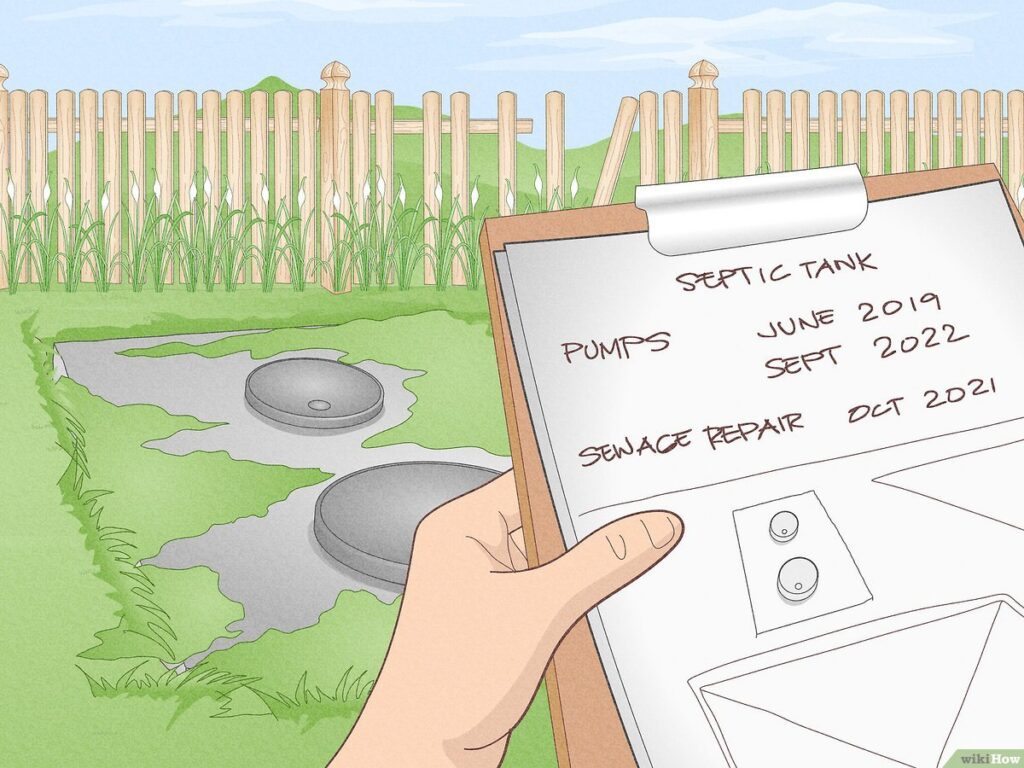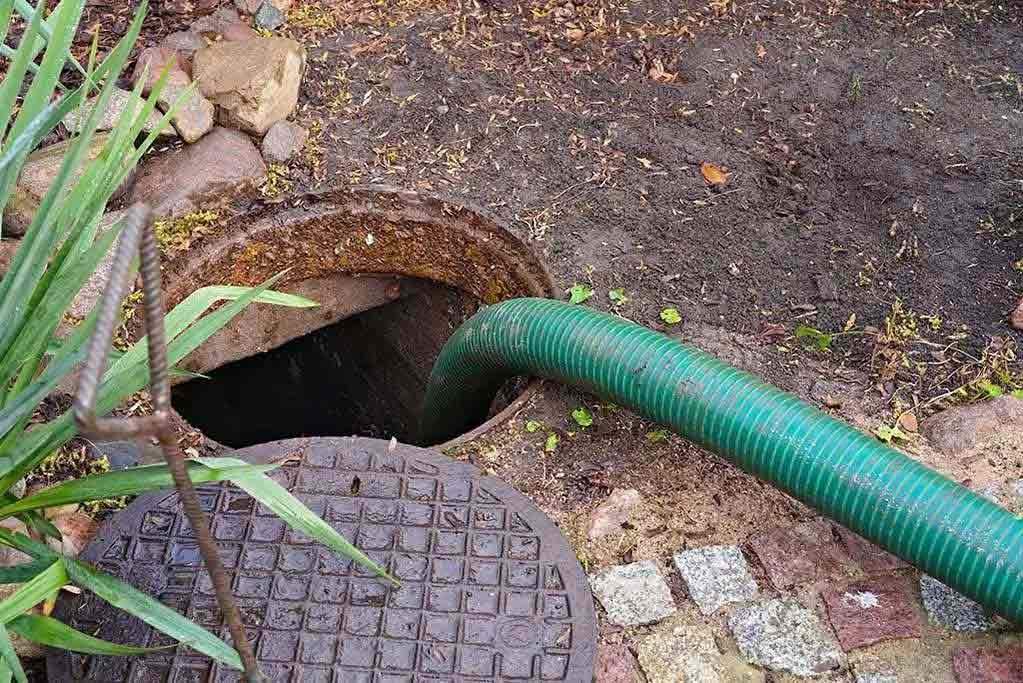If you’ve recently had your septic tank pumped, it’s important to know what steps to take next in order to ensure its proper functioning and longevity. “What To Do After Septic Tank Is Pumped: Essential Steps for Post-Pumping Care” provides a comprehensive guide on how to properly maintain and care for your septic system after pumping, including tips on monitoring water usage, maintaining drain fields, and preventing future issues. By following these essential steps, you can ensure the longevity and efficiency of your septic tank system.
Inspect the Tank
Check for any signs of damage or leaks
After your septic tank has been pumped, it is important to inspect it thoroughly for any signs of damage or leaks. Inspect both the interior and exterior of the tank, paying close attention to the walls, lid, and seams. Look out for any cracks, corrosion, or signs of wear and tear. These could indicate potential issues that need to be addressed before they worsen.
Inspect the baffles and inlet/outlet pipes
In addition to checking for damage or leaks, it’s essential to inspect the baffles and inlet/outlet pipes of your septic tank. Baffles are important components that help to prevent solid waste from clogging the drainage system. Make sure they are intact and functioning properly. Examine the inlet and outlet pipes for any signs of blockages or obstructions. If there are any issues, it’s best to address them promptly to avoid further complications.
Ensure the tank is properly sealed
Another crucial step in post-pumping care is to ensure that your septic tank is properly sealed. A secure and airtight seal is vital to prevent any odors or gases from escaping and to maintain the overall integrity of the system. Check the lid and any access points for tightness and proper sealing. If you notice any gaps or loose seals, it’s important to fix them promptly to prevent any contamination or potential hazards.
Check the Drainage Field
Inspect the distribution box
After pumping the septic tank, it is important to inspect the distribution box. The distribution box plays a critical role in evenly distributing the wastewater from the septic tank to the drain lines in the drainage field. Check for any signs of damage, blockages, or clogs in the distribution box. If any issues are detected, it is important to address them promptly to ensure proper drainage and prevent any potential backups or overflows.
Inspect the drain lines for any blockages
It is equally important to inspect the drain lines in the drainage field for any blockages. Over time, solid waste particles can accumulate in the lines, causing clogs or reduced drainage capacity. Inspect the drain lines carefully, paying attention to any signs of slow drainage or damp soil around the field. If you notice any blockages, it’s crucial to address them promptly before they lead to more severe problems, such as sewage backups or flooding.
Ensure proper drainage
After inspecting the distribution box and the drain lines, it is essential to ensure that the drainage in the field is functioning properly. Observe the drainage area and check for any signs of standing water or soggy soil. Adequate drainage is crucial to prevent the build-up of excess wastewater and to maintain the overall health and efficiency of the septic system. If you notice any issues with drainage, it’s important to take action to resolve them promptly.

Replenish Bacterial Population
Use septic tank additives or bacteria activators
After pumping your septic tank, it’s important to replenish the bacterial population that is necessary for the breakdown of solid waste in the tank. Using septic tank additives or bacteria activators can help in promoting the growth of beneficial bacteria, which aids in the decomposition of organic matter. These additives are typically available in liquid or powdered form and can be easily added to the system.
Follow manufacturer’s instructions for application
When using septic tank additives or bacteria activators, it is crucial to follow the manufacturer’s instructions for application. Different products may have varying dosages and application methods, so it’s important to read and understand the instructions carefully. Following the recommended guidelines ensures maximum effectiveness and helps to maintain a healthy bacterial population in your septic tank.
Avoid Overloading the System
Limit water usage and drainage
To ensure the longevity and optimal functioning of your septic system, it is important to avoid overloading it with excessive water usage and drainage. This means being mindful of your household’s water consumption habits and making efforts to conserve water. Simple measures such as taking shorter showers, fixing leaky faucets, and using water-efficient appliances can significantly reduce the strain on your septic system.
Spread out laundry and dishwasher usage
Another way to prevent overloading the septic system is to spread out your laundry and dishwasher usage. Instead of doing multiple loads of laundry or running the dishwasher all at once, try to spread out these tasks throughout the week. This helps to avoid overwhelming the system with a sudden surge of wastewater and gives the septic tank and drain field ample time to process and absorb the water.

Maintain Proper Grease Disposal
Avoid pouring grease down the drain
One of the most common mistakes homeowners make is pouring grease down the drain. Grease solidifies as it cools, and when it enters the septic tank, it can accumulate and form a thick layer of scum. This scum can clog the pipes and hinder the overall functioning of the system. It is crucial to dispose of grease properly by allowing it to cool and solidify and then placing it in a sealed container for disposal in the trash.
Use a grease trap or container
To further prevent grease buildup in your septic system, it is recommended to use a grease trap or container. A grease trap is a device that captures grease before it enters the plumbing system, preventing it from reaching the septic tank. This simple addition can significantly reduce the amount of grease that enters the system, minimizing the risk of clogs and blockages.
Be Mindful of Chemicals
Avoid using harsh chemicals in toilets or drains
Using harsh chemicals, such as bleach, drain cleaners, or antibacterial soaps, can disrupt the balance of bacteria in your septic tank. These chemicals can kill off the beneficial bacteria that are responsible for breaking down waste and can potentially harm the overall functioning of the system. It is best to avoid using these chemicals in toilets or drains and opt for septic-safe alternatives instead.
Use septic-safe cleaning products
When choosing cleaning products for your home, opt for septic-safe alternatives. These products are specifically formulated to be compatible with septic systems and do not contain harsh chemicals that can harm the bacterial balance. Look for labels that indicate the product’s compatibility with septic systems or seek recommendations from professionals in the field.

Keep Trees and Plants Away
Prevent tree roots from infiltrating the septic system
Tree roots can pose a significant threat to septic systems as they have the potential to infiltrate and damage pipes, tanks, and drain fields. To prevent tree roots from causing damage, it is important to keep trees and large plants at a safe distance from the septic tank and drain field. Consult with an arborist or landscaping professional to ensure that any planting is done at a safe distance to protect your system.
Avoid planting shrubs or trees near the tank or drain field
In addition to keeping larger trees away, it is also important to avoid planting shrubs or trees with aggressive root systems near the septic tank or drain field. These plants are more likely to invade and damage the underground components of the system. Choose landscaping options that have shallow root systems and are less likely to cause damage over time.
Monitor Water Flow and Leaks
Check faucets, toilets, and pipes for leaks
Regularly monitoring water flow and checking for leaks is an important part of septic system maintenance. Even small leaks in faucets, toilets, or pipes can lead to a significant waste of water, placing additional strain on your septic system. Periodically inspect these areas for any leaks or dripping, and promptly repair any issues that are detected.
Repair any leaks promptly
If you do discover any leaks, it’s crucial to repair them promptly. Ignoring or delaying repairs can lead to potential water damage and further strain on your septic system. Call a professional plumber to assess and fix the leaks to ensure the proper functioning of your septic system.

Schedule Regular Maintenance
Have the septic system inspected and pumped regularly
Regular maintenance is key to keeping your septic system in optimal condition. It is recommended to have your septic system inspected by a professional every 1-3 years, depending on the size and usage of your household. During these inspections, the professional will assess the condition of the tank, check for any issues, and determine if pumping is necessary. Regular pumping is typically required every 3-5 years to remove accumulated solid waste from the tank.
Follow recommended maintenance schedule
To ensure that your septic system continues to operate efficiently, it is important to follow the recommended maintenance schedule provided by the professional during the inspection. This may include specific guidelines for water usage, cleaning product recommendations, or other measures to maintain a healthy system. By adhering to the recommended maintenance schedule, you can prolong the lifespan of your septic system and prevent avoidable issues.
Educate Household Members
Inform everyone about proper septic system usage
Lastly, it is crucial to educate all household members on proper septic system usage. Everyone in the household should understand the importance of conserving water, avoiding excessive waste, and using septic-safe products. Educate them on the potential consequences of improper usage, such as system failures, costly repairs, and environmental contamination. By working together as a team, you can ensure the long-term health and efficiency of your septic system.
Provide guidelines for waste disposal
Provide clear guidelines for waste disposal to promote proper septic system usage. These guidelines can include instructions on what can and cannot be flushed down the toilet, proper disposal methods for food waste and other debris, and reminders to use garbage disposals sparingly. By establishing these guidelines, you can prevent unnecessary strain on your septic system and protect it from potential issues.
In conclusion, taking care of your septic system after it has been pumped is essential for maintaining its functionality and preventing future problems. By following these essential steps, such as inspecting the tank and drainage field, replenishing the bacterial population, avoiding overloading the system, maintaining proper grease disposal, being mindful of chemicals, keeping trees and plants away, monitoring water flow and leaks, scheduling regular maintenance, and educating household members, you can ensure that your septic system operates efficiently for years to come. Remember, a well-maintained septic system is not only beneficial for your household but also for the environment.

